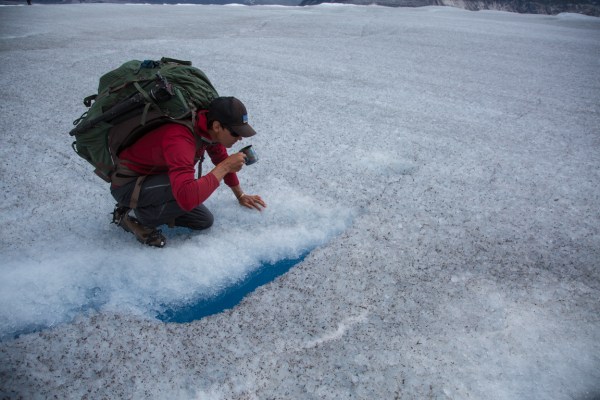Brown, silty streams, tea-colored rivulets, even clear, ice-cold lakes—any backcountry water source can serve up a cocktail of contaminants.
But not everything that’s present in an undeveloped water source is necessarily harmful, and only some things pose an immediate threat to your health. In fact, it’s impractical and unnecessary to remove everything, all the time. So, in terms of backcountry water treatment, when is water considered safe to drink?
First, what’s commonly in backcountry water?
The types of contaminants that make water “dirty” depend a lot on that source’s surrounding environment. But most contaminants can be placed into these categories:
Microorganisms—Simply put: tiny bugs or germs. Microbes are the primary focus of treatment devices because of their immediate and potentially serious risk to your health. The pathogenic ones include bacteria (e.g., E-coli, Salmonella), protozoa (e.g., Giardia, Crypto), and viruses (e.g., Hepatitis A, Norwalk).
Sediment/Turbidity—Dirt, silt, mud, glacial flour. Sediment gives water its dirty appearance and is unpleasant to ingest. But it usually isn’t harmful in small amounts.
Tannins & Humics—This natural organic matter (NOM) leaches into wilderness water as plants decay, staining it a tea color. They’re not harmful in small quantities, but they do impart odors and a bitter taste to the water.
Organic & Inorganic Chemicals—Includes NOMs, but also pesticides, herbicides, and inorganic chemicals resulting from both industrial activity and natural erosion. Health risks usually arise from long-term, repeated exposure.
Ordinary Salts—The result of eroding natural deposits or seawater contamination, salts simply make water taste bad; though very high concentrations can dehydrate you. When exploring coastal and desert regions, avoid drinking sea and brackish waters.
Metals—Metals, like lead and mercury, can result from industrial contamination or natural erosion. They vary in potential health risk, but you can check with the ranger station for any local precautions before venturing out.
Photo courtesy of MSR | James Q. Martin
In terms of backcountry water treatment, what defines water that’s safe to drink?
In the context of backcountry water treatment, water is usually considered safe to drink when it is free of pathogens—the disease-causing microorganisms. This is because they’re considered the “immediate threats.” In other words, swallowing even a few of these pathogenic critters on a short-term backpacking trip can make you sick with flu-like symptoms, or worse, very rapidly.
In contrast, those other non-biological contaminants, while not appetizing, typically take a much greater amount, usually from repeated, long-term exposure to build up in your system and cause you harm. If your favorite backpacking loop makes you drink repeatedly from sources with pesticide runoff—that’s not a good thing. But in general, backcountry zones are relatively low-risk for these types of contaminants and the trace amounts you’d ingest on a typical trip likely aren’t enough to agonize over.
That said, it’s important to assess your own risk level, and include drinking-water collection as part of your trip planning process.
Are treatment devices required to prove their removal claims?
Unfortunately, the answer is no. It may surprise many to learn that there is no government-regulated testing requirement to ensure a portable water treatment device actually removes the pathogens it claims to.
That doesn’t mean that some companies don’t rigorously test their water treatment solutions. For example, MSR voluntarily tests their products to a standard developed by the EPA and NSF. This 10-day, multi-criteria test, called NSF Protocol P231, is based off municipal water treatment requirements. It tests a product’s ability to stop targeted pathogens, requiring that half the water used is so difficult to treat it’s referred to as “worst case” water. This allows MSR to confirm the reliability of their products in real-world conditions.
Needless to say, researching a water treatment product before you buy is critical to your health. In most wilderness regions, a high-quality filter or purifier can get you out and back—with nothing more than stories of great adventure to share.
To learn more about water treatment systems, head over the MSR Blog for the full story. Source: “In Terms Of Backcountry Water Treatment, When Is Water Considered Safe to Drink?”
Learn more about water purification:
Photo courtesy of MSR | Ryan Peterson

